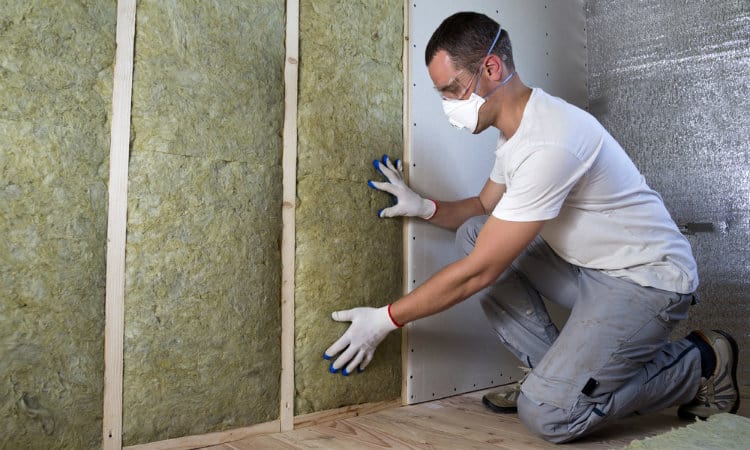Soundproofing a space is essential for maintaining peace and tranquility in environments where noise can be a nuisance. Whether you’re dealing with loud neighbors, street traffic, or internal noise from appliances or HVAC systems, soundproof wall insulation can significantly reduce unwanted sound transmission. However, with numerous options available in the market, choosing the right soundproof wall insulation can be challenging. In this guide, we’ll explore the key factors to consider when selecting soundproof wall insulation to ensure optimal results.
Acoustic Performance:
The primary consideration when choosing soundproof wall insulation is its acoustic performance. The insulation material’s ability to absorb and dampen sound waves directly impacts its effectiveness in reducing noise transmission. Look for insulation materials with high Sound Transmission Class (STC) ratings, as this indicates their ability to block airborne noise. Additionally, consider the insulation material’s NRC (Noise Reduction Coefficient) rating, which measures its ability to absorb sound. Opt for insulation materials with higher NRC ratings for enhanced noise absorption and a quieter environment.
Thickness and Density:
The thickness and density of soundproof wall insulation also play a crucial role in its effectiveness. Thicker and denser insulation materials provide better sound absorption and insulation properties, resulting in improved noise reduction. When selecting soundproof wall insulation, choose materials with sufficient thickness and density to meet your specific noise reduction requirements. Keep in mind that thicker insulation may be necessary for blocking low-frequency noise, such as bass vibrations, while denser insulation is more effective at reducing high-frequency noise, such as voices or traffic.
Material Composition:
Soundproof wall insulation is available in various materials, each with its unique properties and benefits. Common insulation materials include fiberglass, mineral wool, cellulose, foam board, and spray foam. Fiberglass and mineral wool are traditional options known for their excellent sound absorption properties and fire resistance. Cellulose insulation, made from recycled paper or cotton, offers natural soundproofing and thermal insulation. Foam board insulation, such as expanded polystyrene (EPS) or extruded polystyrene (XPS), provides superior soundproofing and moisture resistance. Spray foam insulation expands to fill gaps and crevices, creating an airtight barrier against noise and air infiltration. Consider the specific characteristics of each insulation material and choose the one that best suits your soundproofing needs and preferences.
Installation Method:
The method of installation is another important factor to consider when choosing soundproof wall insulation. Some insulation materials require professional installation, while others are suitable for DIY projects. Fiberglass batts and mineral wool typically come in pre-cut panels or rolls that can be easily installed between wall studs or in cavities. Cellulose insulation is blown into wall cavities using specialized equipment. Foam board insulation can be cut to size and adhered to walls using adhesive or mechanical fasteners. Spray foam insulation is applied as a liquid that expands and hardens, filling gaps and voids in walls. Consider your skill level and budget when deciding on the installation method for soundproof wall insulation.
Moisture Resistance:
Moisture resistance is an important consideration, especially for soundproof wall insulation in areas prone to high humidity or moisture exposure, such as bathrooms, kitchens, and basements. Moisture-resistant insulation materials, such as foam board insulation and closed-cell spray foam, are less susceptible to mold and mildew growth and are ideal for damp environments. Ensure that the chosen soundproof wall insulation has adequate moisture resistance to prevent issues such as rot, decay, and indoor air quality problems.
Fire Safety:
Fire safety is another critical factor to consider when selecting soundproof wall insulation, especially in residential and commercial buildings. Choose insulation materials with appropriate fire ratings and certifications to ensure compliance with building codes and regulations. Fiberglass and mineral wool insulation are inherently fire-resistant and do not contribute to the spread of flames. Foam board insulation and spray foam insulation may require additional fire-retardant treatments or barriers to meet fire safety requirements. Verify that the selected soundproof wall insulation meets the necessary fire safety standards for your application.
Cost:
Cost is an important consideration for any home improvement project, including soundproof wall insulation. The cost of insulation materials can vary depending on factors such as material type, thickness, density, and brand. Fiberglass and mineral wool insulation are typically more affordable options, making them popular choices for budget-conscious homeowners. Cellulose insulation and foam board insulation may have higher upfront costs but offer superior soundproofing and thermal insulation properties. Spray foam insulation tends to be the most expensive option but provides excellent noise reduction and air sealing benefits. Consider your budget and the long-term benefits of soundproof wall insulation when making your decision.
Final Thoughts:
For environmentally conscious homeowners, the environmental impact of soundproof wall insulation is an important consideration. Look for insulation materials that are made from recycled or sustainable materials and have low VOC (volatile organic compound) emissions. Fiberglass and mineral wool insulation contain recycled content and are recyclable at the end of their lifespan, making them eco-friendly options. Cellulose insulation is made from renewable resources and has minimal environmental impact. Foam board insulation and spray foam insulation may contain chemicals with potential environmental and health concerns, so be sure to choose products with low VOC emissions and


